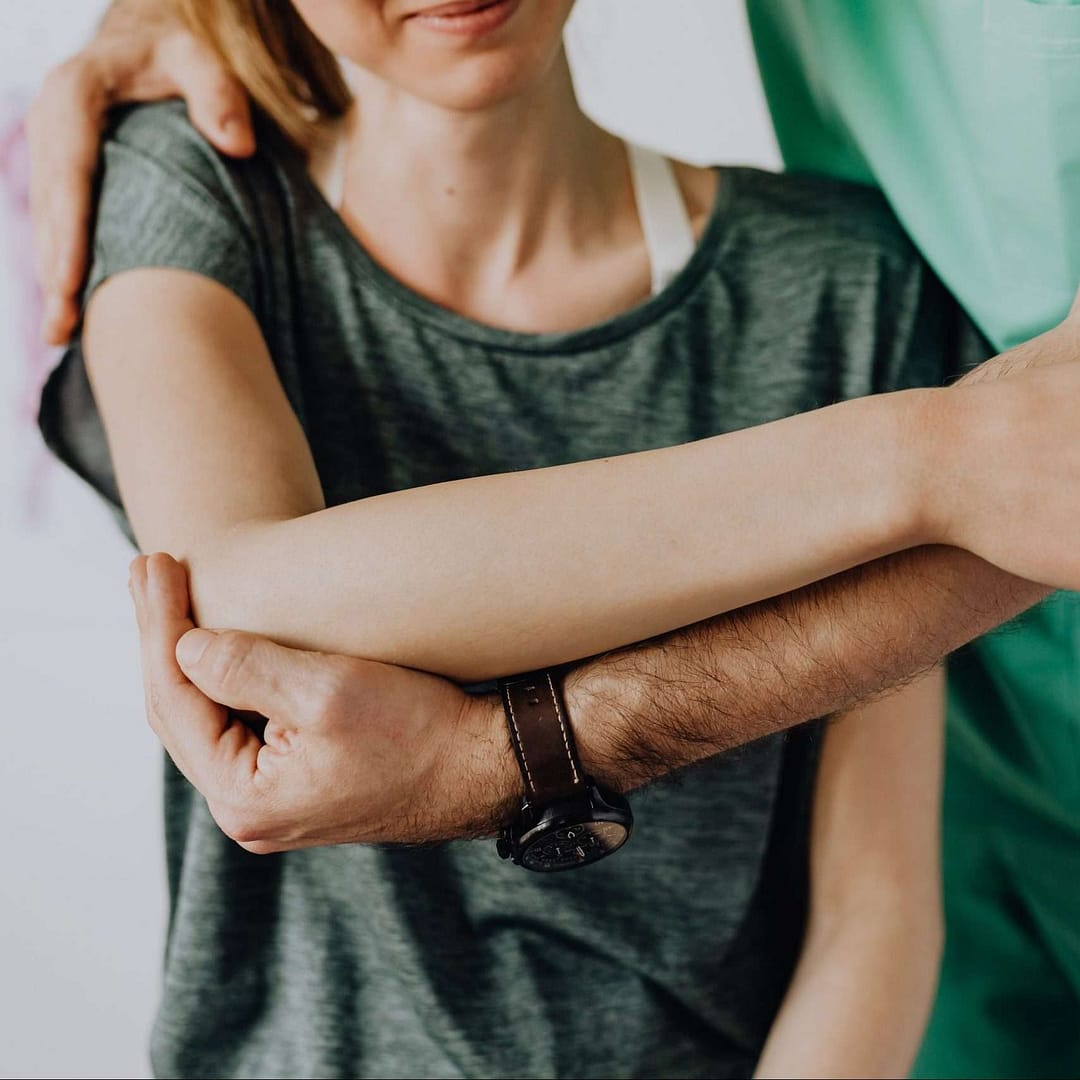Shoulder Pain
The shoulder joint is the most mobile and least stable joint in the human body due to the shallowness of the socket and the size of the humeral head.

Typical Shoulder Injuries
The most common injuries that occur around the shoulder are injuries towards the rotator cuff muscles and tendons. Rotator cuff tears can be either from traumatic causes or from degenerative causes. Traumatic rotator cuff injury does not need to be a major trauma but can happen even from a simple fall and can affect a person of any age. Degenerative tears are more common and have more possible causes. These range from age-related degeneration to repetitive microinjuries, or a combination of both leading to tears among other possible theories. Rotator cuff injuries are also common in athletes who participate in overhead throwing sports like baseball.
The rotator cuff injuries not only have a short-term impact but can also lead to chronic injuries such as degenerative changes to the joint surfaces of the glenohumeral joint cartilage. Another problem common to the shoulder joint is ‘frozen shoulder’. This disease limits movement in the shoulder joint and the thickening of the capsule surrounding the glenohumeral joint. Pain will usually present itself before the limitation of movement sets in, but it does not seem to be the reason for the limitation of movement. Certain risk factors may be attributed to the progression of frozen shoulder like diabetes, thyroid disease and hyperlipidaemia among others. Though the recovery process may take some time, recovery from these shoulder injuries is possible, working towards restoring mobility, strength and function.
Physiotherapy
Rotator cuff tears are the most common cause of shoulder discomfort and impairment. Degenerative changes, recurrent micro traumas, severe traumatic injuries, atraumatic injuries, and secondary dysfunctions can all lead to rotator cuff tears. A rotator cuff injury can be caused by a fall on an outstretched hand, or by an impact to the shoulder. Atraumatic reasons include age-related muscle degeneration and excessive repeated movements.
After a shoulder injury, the first thing which is emphasised is mobility in the joint. This can be improved with manual mobilisation techniques to regain the lost movement. Next, strengthening of the muscles around the joint is necessary.
The main muscles that are needed to be strengthened are the rotator cuff muscles, namely
- Subscapularis
- Teres minor
- Supraspinatus
- Infraspinatus
These muscles work to stabilise the joint actively during movement. Progressive resistive strengthening, proprioception training, and sport-specific activities are all part of the late phases of rotator cuff injury recovery. The intensity of exercises are determined on an individual basis as the damaged tissues should not be overloaded or overstressed.
Sport Therapy for Shoulder Injuries
The sports therapy for any shoulder injuries will begin upon discharge from physiotherapy. The Patient is expected to be pain free and able to move through the normal range of motion pain free as well.
The main goal in sports therapy for shoulder injuries is to enhance stability, control, strength & mobility. In most cases, the initial phase will start with re-educating the muscles which have atrophied, especially those important for stabilization purposes. During this time, flexibility and mobility exercises will be incorporated to maintain the joint range of motion and muscle flexibility.
Progressively, focus will also be given to proprioception or joint sense, which is the main contributor to establishing good neuromuscular control and joint stability during daily activities and sports practice. With that being said, modes of exercise would gravitate from unloaded to loaded shoulder positions depending on patient tolerance.
At Terramed, we have a piece of equipment called an SRT, which both stands for and focuses on Stochastic Resonance Therapy. It consists of 2 plates that vibrate and move in random directions, causing the platform to be unstable for the user. Indirectly, this randomness feature mimics daily life situations as most injuries happen unexpectedly. In terms of shoulder rehabilitation, the SRT allows users to work on their shoulder stability in a safe environment while working on training his/her neuromuscular control.
Prevention and Reconditioning
The shoulder joint is the most mobile and least stable joint in the human body due to the shallowness of the socket and the size of the humeral head, which is noticeably too large for said socket. Unlike other joints, like the hip for example, the shoulder cannot rely on bony geometry for its stability; it has no choice but to solely rely on ligaments, tendons, and muscles. For this very reason, it is important to maintain the strength and mobility of the shoulder in order to prevent injury as shoulder injuries can occur at any time, not just during sporting events.
Due to the nature of many of our daily lives, we spend most of our time being hunched over, with our shoulders rolled in:
- In front of the computer
- Driving
- Eating
- Using our phones
- Doing house chores
In our prevention and reconditioning program, the goal is to prevent injury or reinjury of the shoulder. It is crucial to establish adequate mobility, as demanded by the patient’s sport or daily activity. On top of that, weak muscles have to be strengthened and tight muscles have to be released and stretched.
These exercises are specific to each individual and differ depending on injury, limitation, and goals.
Call Us
Mobile: +60 12 771 9763
Email Us
info@terramed.com.my
Our Location
Lot 20 & 21, Level Mezzanine, UOA Business Park, No. 1 Jalan Pengaturcara U1/51, Seksyen U1, 40150 Shah Alam, Selangor